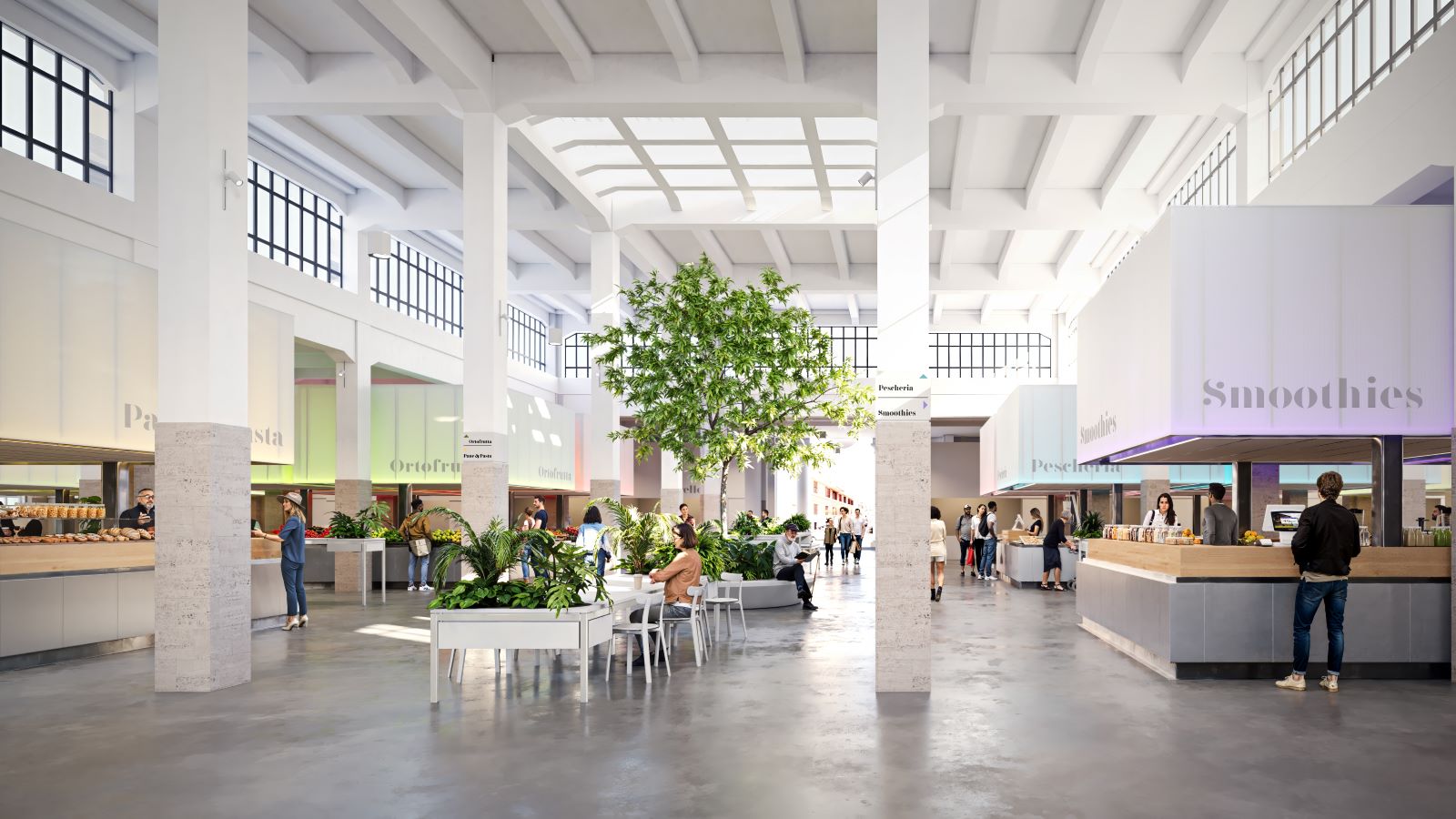As part of Rome Capitale’s program to redevelop and enhance public spaces for the 2025 Jubilee of the Catholic Church, ADAT Studio and the engineering company LaSIA Spa developed the Unità Market project, focused on rejuvenating a historic structure in the heart of Rome, redefining the market experience and rethinking its functional characteristics.

The intervention aims to enhance a historic market complex and attract a broader audience than traditional markets, transforming a single-function structure into an urban gallery capable of meeting diverse community needs and creating a new social hub.
The Unità Market has a history spanning more than a century. Before the construction of the current Neoclassical-style structure in 1928, with its monumental entrance on Via Cola di Rienzo, Piazza dell’Unità hosted a spontaneous market that later evolved into a regular open-air market.

Originally, the market housed sales activities on both the ground floor and in the basement, now used as an underground garage. The building’s terrace has always been a major attraction in the neighbourhood; during its early years, it even hosted an ice-skating rink. Despite the closure to the public in the 1970’s, the terrace continued to offer an open space until its final closure. Over the years, the structure has undergone numerous maintenance and restoration interventions. A significant renovation occurred in the 1970’s with the creation of the garage replacing the underground sales floor. The most recent restoration occurred in 2020.

The new Unità Market includes redesigned food and shop stalls replaced by new structures called “lanterns” which can transform from commercial booths into illuminated devices during events and activities outside traditional market hours. Each lantern consists of a fixed base and a translucent, backlit upper enclosure designed to rise on mechanised telescopic columns during market opening hours.
Upon closing time, the backlighting of each lantern can be programmed to create interactive light scenes specifically for various events and activities hosted by the new market, such as neighbourhood events, art exhibitions, craft fairs, and informal study and work meetings.

The ultimate goal of the intervention is to transform the traditional neighbourhood market into a multifunctional, multilevel urban attraction while maintaining its popular appeal.
The commencement of construction is scheduled for October 2024, with the project set for completion in 2025.


